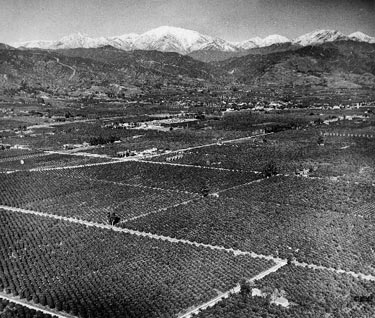
Glendora, California
Glendora Bougainvillea 
Courtesy Citrus College Library
history continued
Bougainvillea is named for Frenchman Louis Antoine de Bougainville. In 1768, de Bougainville, along with royal botanist Philibert Commerson, set sail on a voyage of discovery for France. Commerson discovered the plant in Brazil during this voyage and subsequently named it after Bougainville. After traveling through the South Pacific, the expedition returned to France with countless new species in tow, including the bougainvillea. It is believed that the first bougainvilleas were brought to Southern California by a whaling ship about 1870. According to noted horticulturalist, Dr. Francesco Franceschi, both "glabra" and "spectabilis" were old-timers in Santa Barbara by 1895.
The Glendora Bougainvillea are located within a particularly conducive microclimate within the already mild Southern California region. (Bougainvillea are tropical to sub-tropical plants and, as such, can be subject to considerable dieback when exposed to freezing or even near freezing temperatures). The former Pittman ranch, site of the Glendora Bougainvillea, sits within a narrow warm air stream that flows during the evenings from nearby Dalton Canyon. This air stream assures that the vines are seldom subjected to freezing temperatures over night. During the 1950s, heavy rain and windstorms sheared off the dead palm fronds that served as support for many of the vines. Gradually, the vines began to slide down and bulge, causing the bougainvillea to vary in height from between twenty to forty feet.